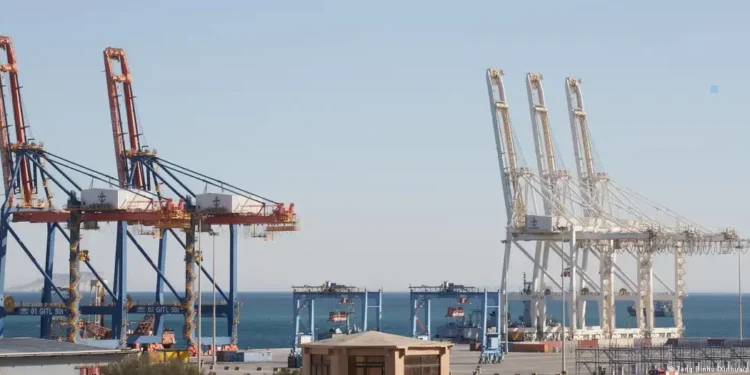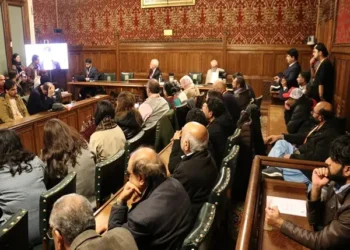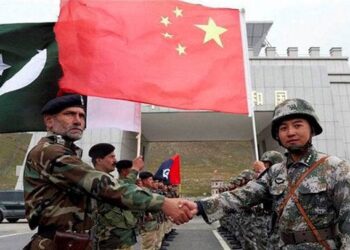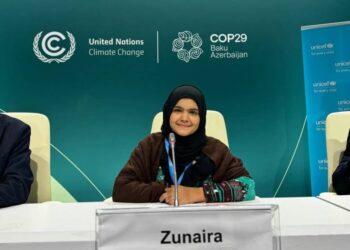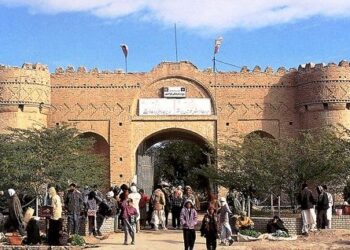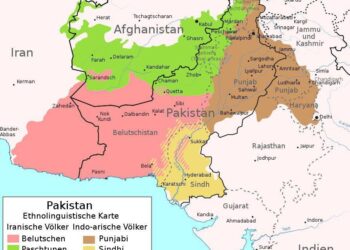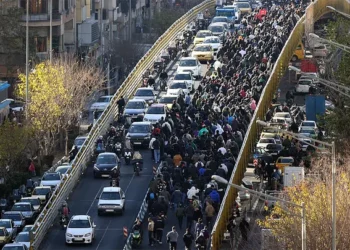No products in the cart.
How India’s bet on Chabahar can counter China’s Gwadar gambit
The ongoing conflict in the Black Sea and the Houthi actions in the Red Sea resulted in the blockade of grains from Ukraine and the rerouting of vital marine traffic from the Red Sea.
Momentary panic in the trade circles caused steep fluctuations in essential commodities such as rice prices. This emphasises the need for alternative forms of trade and transport connectivity routes.
Non-state actors can hold trade to ransom using simple drones and rockets. There is a need to reimagine connectivity, especially since colonial powers established the current trade routes over the sea and land.
It served the purpose of carting goods from Asia to fuel the Western economy. However, large parts of Asia remained out of this transport network and consequently underdeveloped. The current network is a legacy of the colonial era, which benefits developed nations more.
India, guided by the principle of Vasudhaiva Kutumbakam, is strategically planning new routes to connect Asia to Europe along the Arabian Peninsula and Central Asian nations through Iran.
These routes are not just about trade but about reshaping the geopolitical landscape. Central Asian countries, rich in natural resources such as oil, natural gas, minerals, and arable land, are key players in this new paradigm.
Countries like Kazakhstan and Turkmenistan, with substantial oil and gas reserves, and Uzbekistan, one of the world’s leading cotton producers, are set to benefit.
India’s connectivity plans are a bold challenge to the norms established by the erstwhile powers in the region.
So, what does India want, and how do these corridors help? Let’s explore these in a few words without delving into too many details.
The name ‘Chabahar,’ meaning ‘Four Springs’ in Persian, has a rich history dating back to ancient times. It was part of the Achaemenid Empire, one of the largest empires in ancient history, which ruled significant parts of the Middle East and Central Asia.
With its strategic location, the port was a vital trading hub during this period. Today, it holds the potential to be the gateway for India to access landlocked Central Asian countries like Afghanistan and beyond.
The port’s development gained momentum with the signing of the Chabahar agreement in 2016 between India, Iran, and Afghanistan. This agreement aims to enhance regional connectivity and reduce Afghan dependency on Pakistan.
This agreement, a significant step towards establishing a transport and trade corridor through the Chabahar port, was marked by the first visit of an Indian Prime Minister to Iran in 15 years. During this event, PM Narendra Modi announced India’s commitment to investing $500 million, a testament to the port’s historical and future significance.
India recently finalised a 10-year contract to develop the strategically significant Chabahar port in Iran. India Ports Global Ltd (IPGL), a government-supported entity, plans to invest around $120 million in equipment and operations at the port for the duration of the contract, with potential for extended cooperation beyond this period.
India’s Foreign Minister, S Jaishankar, emphasised the importance of communication and persuasion in helping people see the broader benefits of this decision. Responding to US criticism, he said, “I think we need to explain to everyone and convince them that this benefits all. Taking a narrow view isn’t helpful.”
The port is a critical node in the International North-South Transport Corridor (INSTC), which aims to connect India, Iran, Russia, and other Central Asian countries through maritime and land routes.
Chabahar Port is significantly close to Gujarat on India’s west coast and is only 768 nautical miles from Mumbai. India depends heavily on the Strait of Hormuz for its trade with Central Asia and Afghanistan.
The frequent tensions in the region are caused by extra-regional forces that could disrupt this route. Chabahar Port offers India an alternative trade pathway, ensuring that, even if issues arise in the Strait of Hormuz, India can continue its trade activities safely.
India can extend the corridor to northern Europe via Saint Petersburg in Russia. According to industry estimates, shipping via the INSTC route could reduce transit time by 15 days compared to the traditional Suez Canal route.
The second connectivity project that can potentially improve connectivity between Asia and Europe is the India-Middle East-Europe Economic Corridor (IMEC).
A deal establishing the IMEC was signed by Saudi Arabia, the US, the EU, India, the UAE, France, Germany, and Italy and announced by Crown Prince Mohammed bin Salman on the sidelines of the G20 Summit in New Delhi in September 2023.
The new 4,800-kilometre trade route is intended to stimulate economic development and integration. It comprises two separate routes: an east corridor linking India to the Arabian Gulf and a northern corridor connecting Gulf states to Europe.
The rail and sea route will enable the transit of goods and services, electric and digital connectivity, and pipelines to export clean hydrogen. The IMEC signifies a deepening relationship with the convergence of the Middle East and South Asia into West Asia.
Why now?
To understand this, it is essential to know that India’s trade ties with Saudi Arabia and the UAE are already substantial, and this corridor could further strengthen their economic integration.
The IMEC goes back to the natural connectivity of eras past. Historic trading links between the Indian subcontinent, the Middle East, and Eurasia show that long distances are no barrier to shared interests.
The colonisation of Asia and the partition of the Indian subcontinent in 1947 ruptured India’s historic corridors to the Middle East and Eurasia. India wants to rebuild these linkages.
Why Chabahar and not Gwadar
India’s vision counters the much-hyped but yet-to-deliver Belt and Road Initiative. China was to develop the Gwadar port to connect with Kashgar, the China-Pakistan Economic Corridor (CPEC) jewel.
However, the Gwadar project was never meant to be a connectivity project. China’s intent all along was to build a naval base. Pakistan played along because it benefited their naval strategy of reducing dependency on Karachi.
Pakistan initially approached the US to develop Gwadar but was declined since Gwadar was not commercial. China, which had later realised the need for a base in the Arabian Sea, managed to trap cash-strapped Pakistan through grants, aid, and overpriced loans.
Since its establishment, this port has received one to two ships a month, some carrying equipment for building Chinese projects in Gwadar, such as an international airport.
The Port of Singapore Authority, the initial port operator, had to leave Gwadar in 2012 and was replaced by China Overseas Port Holding Company (COPHC).
Under the guise of development, the Balochis, the local population of Gwadar, have been kicked out of the city, and the entire town has been fenced in; the fishermen have lost their livelihood, and protests are constant in Gwadar.
What has ‘Jewel of CPEC’ achieved to date?
The story of Gwadar is like that of Hambantota, where the port fared so poorly that it eventually defaulted on its debts. The Sri Lankan government had little choice but to hand over 80 per cent of the port’s ownership to China and a large swathe of surrounding land on a 99-year-long lease.
This is a highly possible scenario for Gwadar, which has been going through its worst economic crisis for the last five years.
A crisis brought about by the same project under CPEC that was supposed to turn around the Pakistani economy significantly increased Pakistan’s foreign debt, with around one-third owed to China. This has exacerbated the country’s economic instability and pushed it towards a potential debt trap.
Pakistan has been deferring various payments under the project. The previous week, Pakistan contemplated seeking a five-year extension on the $15.5 billion debt in the Chinese energy sector, which has 21 independent power plants running on imported coal (while Pakistan has vast coal reserves in the Thar region).
The initiative has also been plagued by corruption and inefficiencies, with numerous projects delayed or canceled. Most projects have been awarded to army organisations such as FWO and NLC.
Infrastructure and energy projects have not spurred significant economic growth or attracted substantial foreign investment, leaving Pakistan with high inflation, unemployment, and poverty rates.
As per reports, the debt-to-GDP ratio is already above 70 per cent, and the IMF and credit rating agencies estimate that the interest payments on its debt will soak up 50 per cent and 60 per cent of the government’s revenues this year. That is the worst ratio of any sizeable economy in the world.
Security issues, particularly in regions like Balochistan, have further hampered progress, with frequent attacks on Chinese nationals and CPEC projects. Environmental concerns also overshadow the project, mainly due to its focus on coal-powered power plants.
Overall, CPEC has failed to deliver on its promises of economic development and regional connectivity, burdening Pakistan with debt and unfulfilled expectations. Hence, one cannot expect much from Gwadar regarding improving connectivity or bringing economic prosperity to the region.
India, on the other hand, has always been transparent in its deals with Iran and has already started trading with Afghanistan through the port of Chabahar.
India has walked the talk, stood by its long-time friend, and delivered. It plans to connect the region, even in the face of strong opposition from certain countries. Through IMEC and INSTC, India seeks to reimagine connectivity. New Delhi’s strategic impetus is to rejig and rekindle historic linkages towards an Asian resurgence.
N C Bipindra is the chairman of Law and Society Alliance, a New Delhi-headquartered think tank. The views expressed in the above piece are personal and solely those of the author. They do not necessarily reflect Firstpost’s views.
Please login to join discussion
easyComment URL is not set. Please set it in Theme Options > Post Page > Post: Comments

